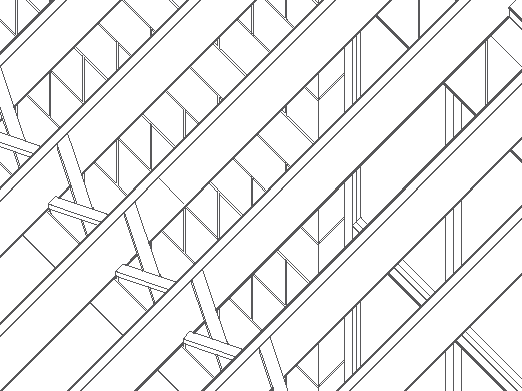Extended Abstract
The provision of adequate shelter is one of the most pivotal challenges after a natural disaster. Shelter designs incorporating rigor in aesthetic, economic, and functional capabilities aid users in experiencing a more holistic post-disaster recovery. While appropriate shelter design can alleviate issues of poverty, such design can also assuage deficiencies in morale and dignity that are exposed during the post-disaster reconstruction phase, which are undeniably exacerbated among impoverished or disadvantaged populations. This remains true for both developing and developed nations. For this reason, the most successful transitional housing, I argue, will be that which is not only economically viable and structurally sound, but that which also elicits positive emotional response and use by its occupants.
This thesis recognizes that design alone is not to be blamed or exalted for the experiences that users have following a disaster, for the events are often too complex and intertwined to be so simplified. The design of shelters does, however, play a critical role which this project investigates. The events surrounding Hurricane Katrina (2005) and the earthquake in Haiti (2010) are consulted extensively as case studies. By merging two areas that are rarely connected – poverty and aesthetics – through product design, the thesis endeavors to understand how aesthetics might have a positive impact on disaster victims occupying transitional housing in developed and developing nations alike.
The methodology is divided into two major parts: qualitative and quantitative. I conduct interviews with persons who have experienced or are currently experiencing poverty or displacement. Displacement is loosely defined to be a result of war/civil unrest, natural or man-made disaster, or other hardship. Participants are recruited from three agencies – two in Saint Louis, Missouri and one in Buffalo, New York – for this portion of the work.
In an effort to determine those characteristics that make products pleasurable (or non-pleasurable) to use, participants are asked about their background and about kitchen products that they use. The kitchen is the focus because (1) it is rarely omitted from a shelter or house design and (2) kitchen items are used by every member of a household. This qualitative portion helps to answer a few questions, namely: What effects do the design kitchen products have on impoverished or displaced occupants? What is most important to these persons as they seek transitional shelter?
In an effort to determine those characteristics that make products pleasurable (or non-pleasurable) to use, participants are asked about their background and about kitchen products that they use. The kitchen is the focus because (1) it is rarely omitted from a shelter or house design and (2) kitchen items are used by every member of a household. This qualitative portion helps to answer a few questions, namely: What effects do the design kitchen products have on impoverished or displaced occupants? What is most important to these persons as they seek transitional shelter?
The second part is quantitative. Participants fill out a survey that asks them to rate a few product samples against five criteria: usability, weight and feel, function, visual aesthetic appeal, and customizability. The data resulting from the interviews and surveys are then analyzed using two rigorous statistical methods which are native to human-centered design. This process is known as Kansei engineering. Kansei engineering, a term coined in Japan, describes the statistical and parametrically-driven quantification of what makes things appealing. It is used by several companies to translate customers’ psychological wants and needs into a product’s design in order to boost user satisfaction. Kansei engineering has seen widespread success in for-profit applications; this thesis introduces it within a humanitarian context. The analyses undertaken as part of this thesis work give rise to ways in which beautiful, economically viable, universally designed products might be implemented into future transitional housing, making such housing more habitable and pleasing for occupants as their communities recover and work towards permanence and resilience. This work is valuable to agencies and organizations – both local and international – involved in the design, management, and deployment of transitional shelters after natural disasters, widespread civil unrest, and other such events.
